
There’s nothing more essential to life than water. It composes over half of our human body and it is a vital nutrient to the life of every cell. However, what happens when this critical “ingredient” to survival is not clean? Unsafe drinking water can transmit harmful bacteria, viruses and parasites, all contributing to waterborne illness and disease.
Clean drinking water is not something I gave much thought to in U.S. It seemed to always be at hand, in the form of a water cooler, bottled water, or even just tap water. However, this basic commodity back home is something that very few schools in Uganda have access to. The consequences of untreated water include students becoming sick, having difficulty focusing in school, ceasing to retain nutrition from food and unfortunately (in extreme cases), dying...All from a very preventable "problem".
Over the last two months, I have been working with Kiva Partner, Impact Carbon (IC), who works hard to tackle this problem. This young Kiva partner (of only two years) is providing water filtration systems to schools throughout Uganda. I had a chance to travel with IC to conduct borrower verifications. Spoiler alert: they received glowing reviews from headmasters and student alike. I also gained a much deeper appreciation for clean water and its importance in improving health and well-being of students.
I would like to share some of what I learned with you and of course, tell you more about Impact's wonderful work.
THREE CURRENT COMMON WATER SOURCES IN UGANDA SCHOOLS
Firstly, some context for common water sources at schools in Uganda today that I observed.
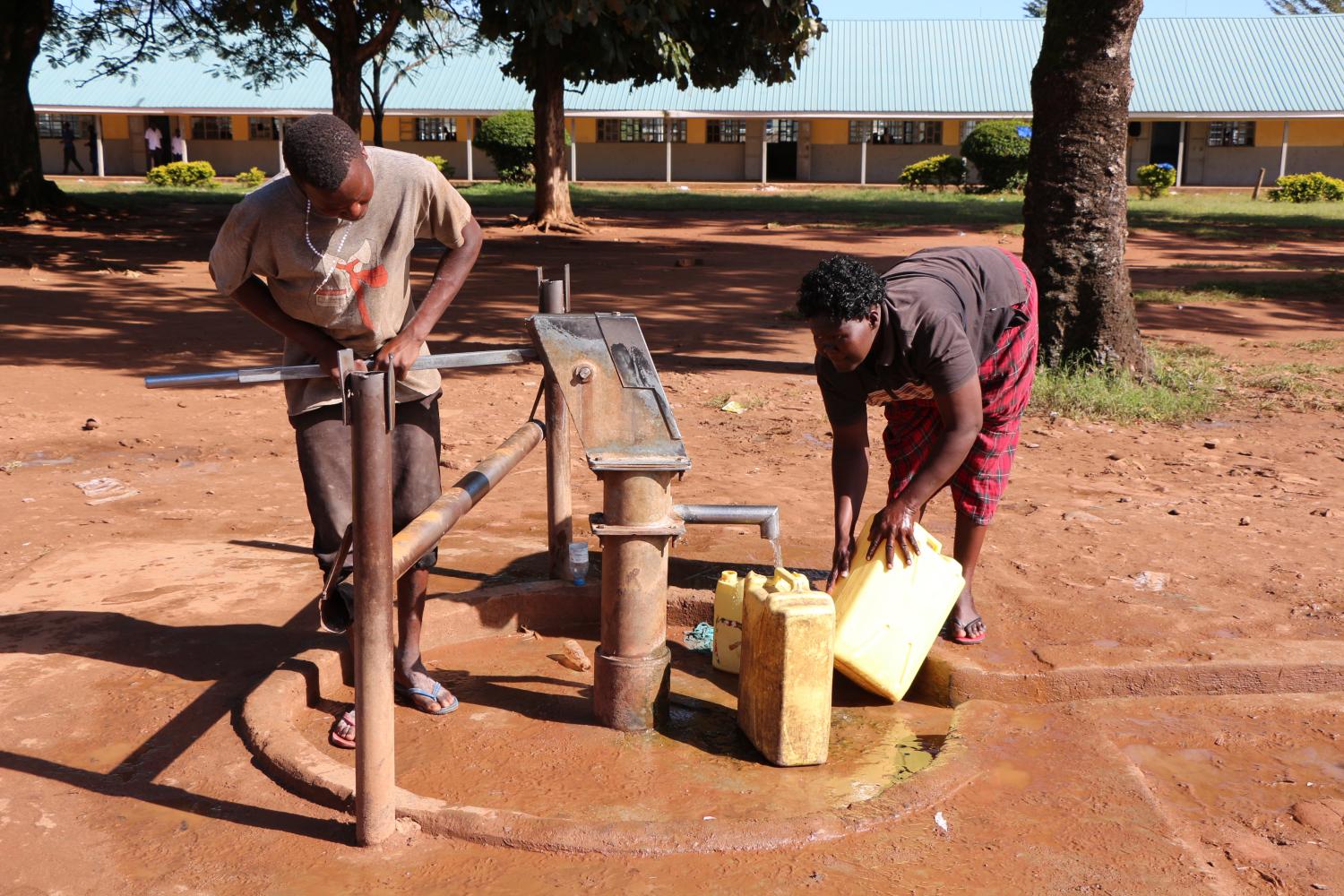 Many schools have boreholes (narrow shaft drilled into the ground) connected to a pump. This water source comes straight from the ground with no filtration in between.
Many schools have boreholes (narrow shaft drilled into the ground) connected to a pump. This water source comes straight from the ground with no filtration in between.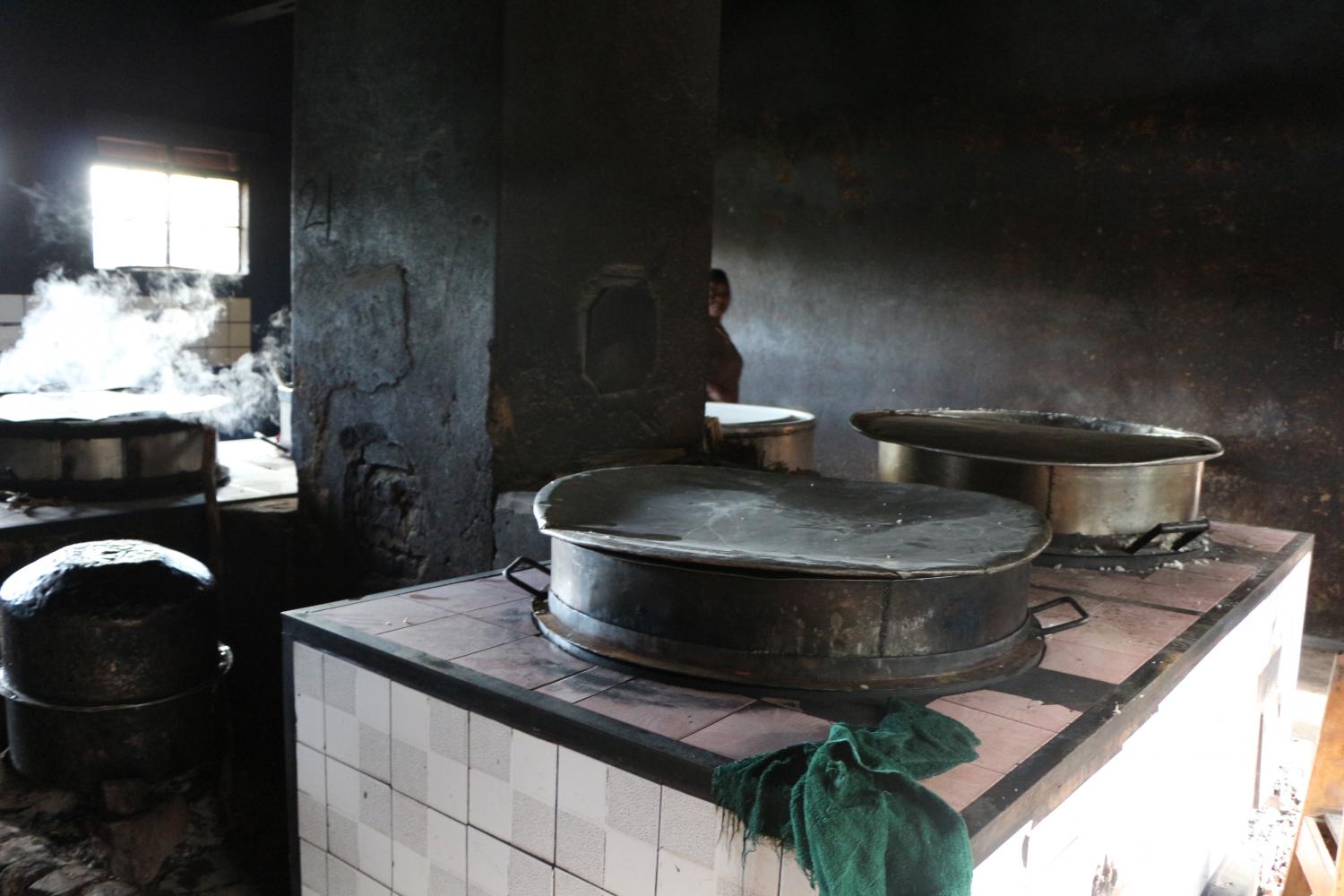 Some schools may invest money for firewood to boil water, but this process requires time, is costly, and is not very environmentally friendly.
Some schools may invest money for firewood to boil water, but this process requires time, is costly, and is not very environmentally friendly.IMPACT WATER’S INNOVATIVE SOLUTION
One small but mighty Kiva Partner, Impact Carbon (IC) is tackling this issue in Uganda. IC owns a social business called Impact Water, which delivers safe drinking water to schools throughout the country. Impact Water began in Uganda in 2012 and soon became a Kiva Partner. Unlike a more traditional microfinance loan, the money funded on Kiva actually goes towards the purchase of a water tank and filtration system for the school, who then pays back lenders from school fees over five or eight school terms (depending on if it is privately owned or government owned respectively).
Impact in Numbers: In two years of partnership, 470 schools have been funded by Kiva lenders. This means ~260,000 students are receiving ~400,000 liters of clean drinking water every day. Their goal is to expand into 5,000 Uganda schools (~20% of market) by 2018.
Here's how it works:
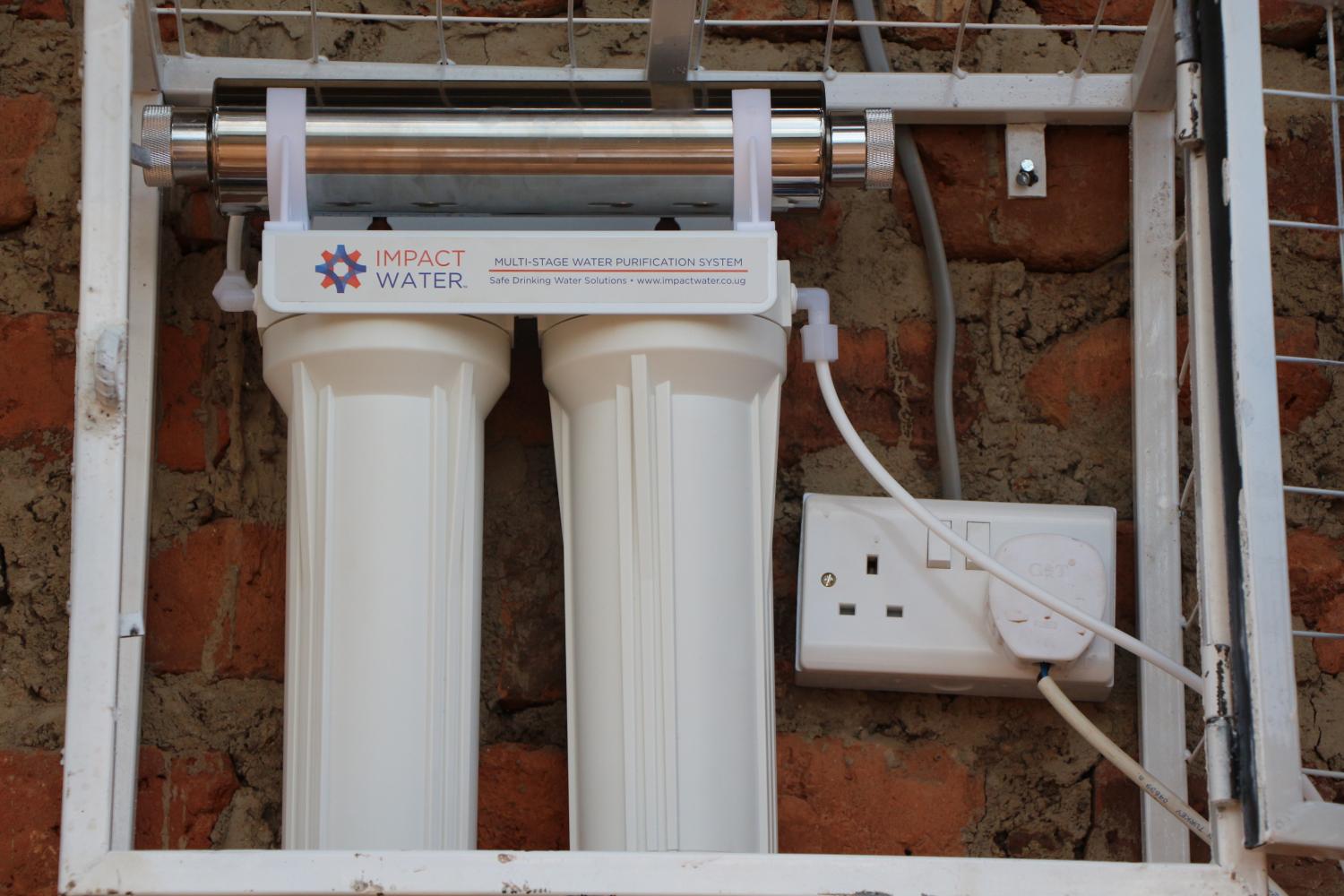 Impact Water uses 3-stage filter system that includes 1) pre-filtration to remove dirt, particulates, larger pathogens 2) activated carbon purification to remove dissolved substances and improve taste and odor 3) UV disinfection to kill remaining unsafe items.
Impact Water uses 3-stage filter system that includes 1) pre-filtration to remove dirt, particulates, larger pathogens 2) activated carbon purification to remove dissolved substances and improve taste and odor 3) UV disinfection to kill remaining unsafe items.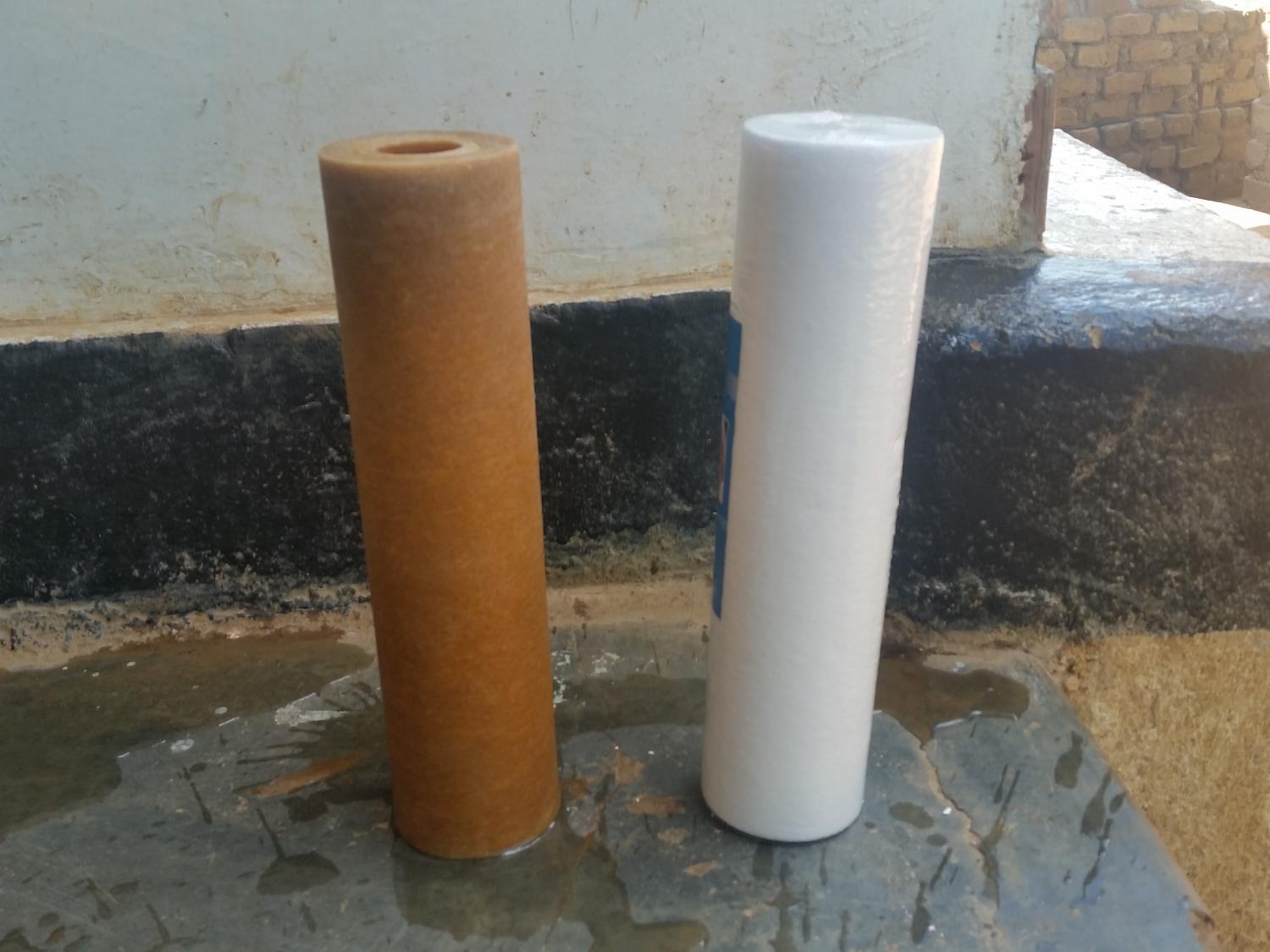 Before and after of a filter for basic dirt and particles. Without this system, all the dirt and particles captured by the filter on the left would be going into a student’s body! And that’s not even including the invisible bad things!
Before and after of a filter for basic dirt and particles. Without this system, all the dirt and particles captured by the filter on the left would be going into a student’s body! And that’s not even including the invisible bad things! 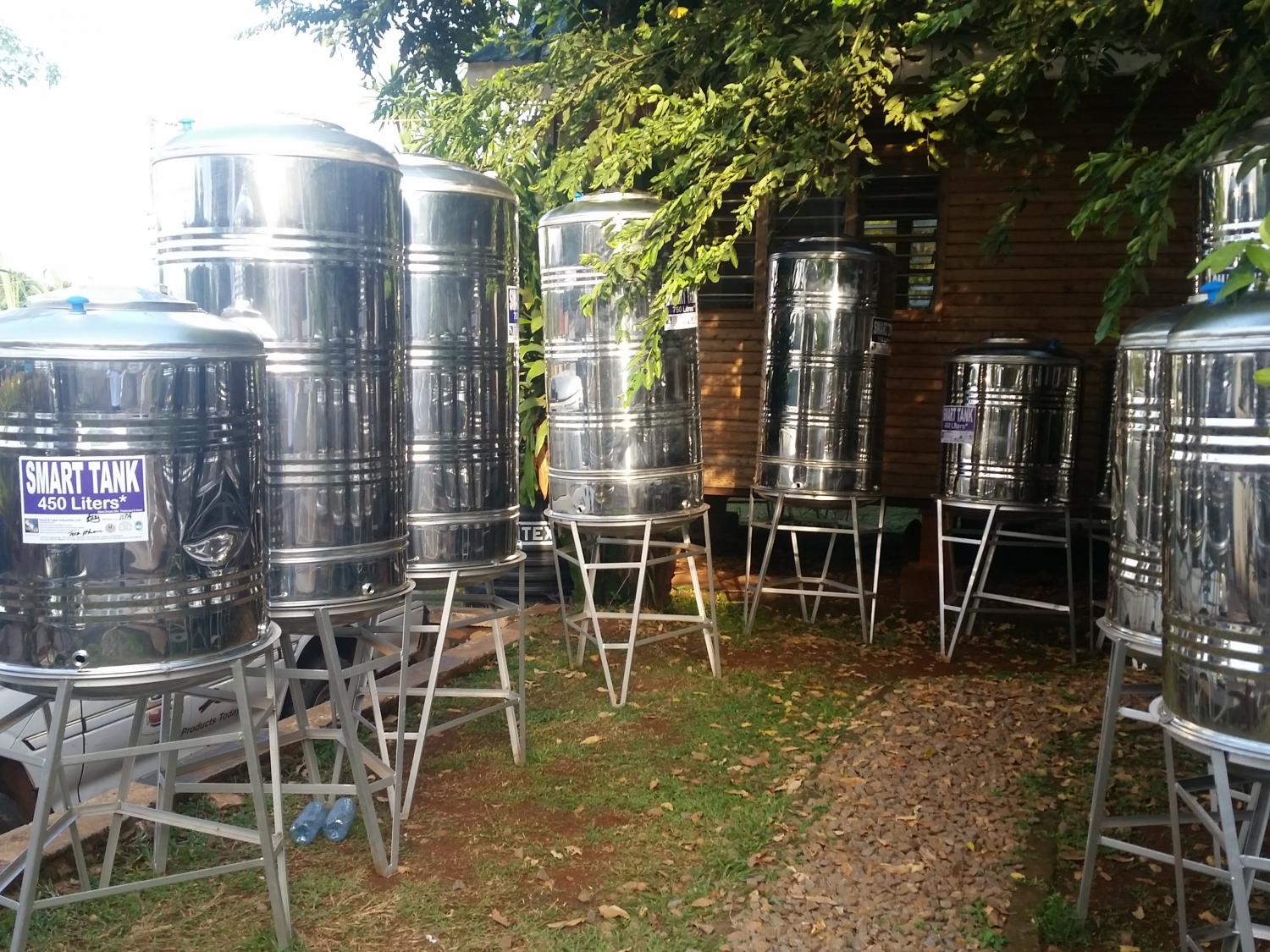 After the water is filtered, it is passed into one of these tanks (450 , 750, or 1000 liters depending on school size).
After the water is filtered, it is passed into one of these tanks (450 , 750, or 1000 liters depending on school size). 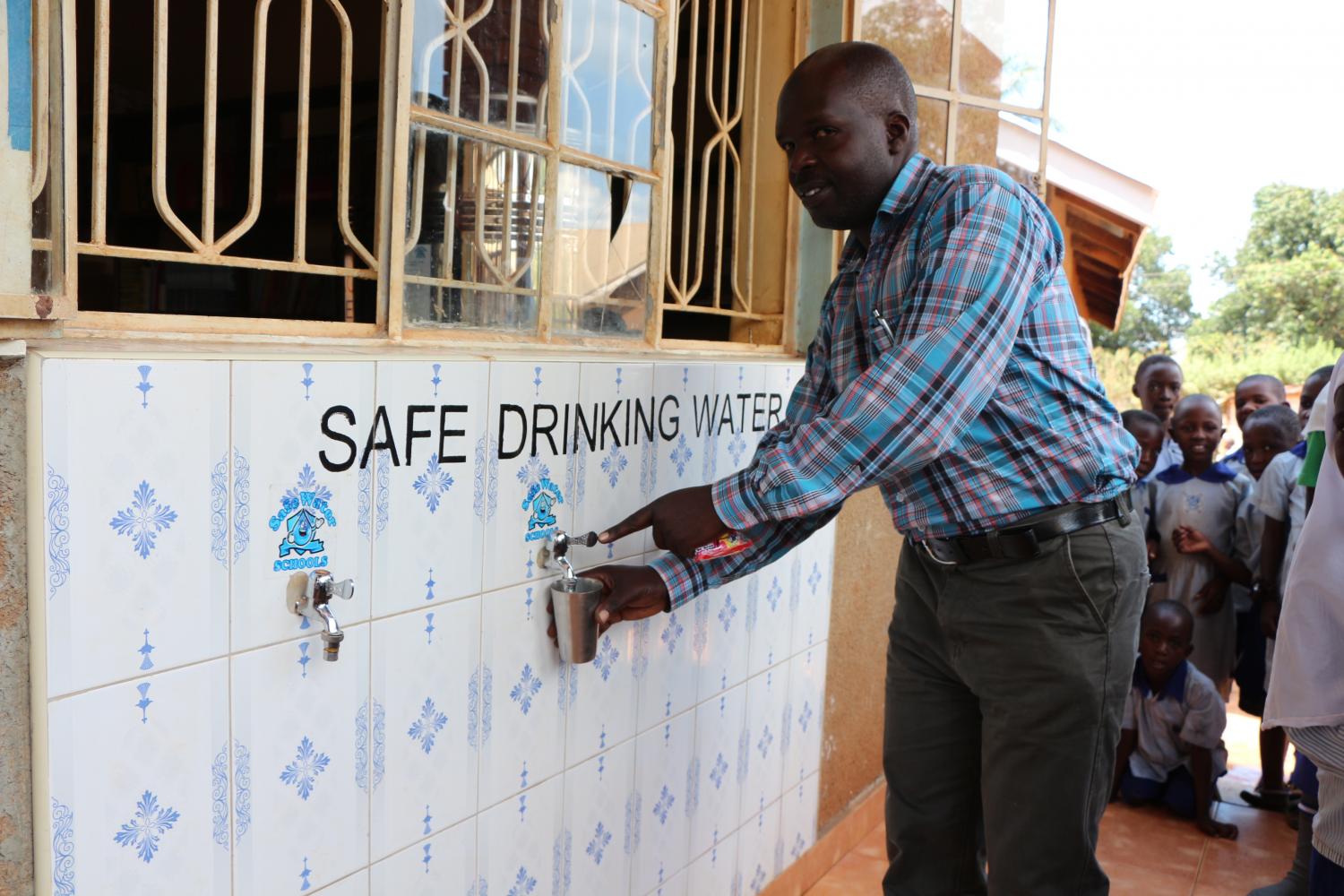 The resulting clean water is fed out through taps, either attached to the tank itself or connected to an outside space with system in a protected space. This school not only protects their tank from the elements by having it in a room but also has a very nice sign, which helps with behavior change in students.
The resulting clean water is fed out through taps, either attached to the tank itself or connected to an outside space with system in a protected space. This school not only protects their tank from the elements by having it in a room but also has a very nice sign, which helps with behavior change in students.FEEDBACK FROM SCHOOLS
As I've traveled all over Uganda to visit schools with clean water system. I have heard excellent feedback about the system and Impact Water's customer service. It is a partner that balances "social" impact and "business" sustainability, to create a strong (drumroll please...) social business. 2015 marks Kiva's 10th birthday and part of its evolution is expand beyond traditional microfinance institutions and banks to partner also with small businesses with a compelling mission like Impact Carbon. Thank you to Kiva Lenders, Impact Carbon has a stable source of capital to be able to expand at an exponential rate despite its' young age.
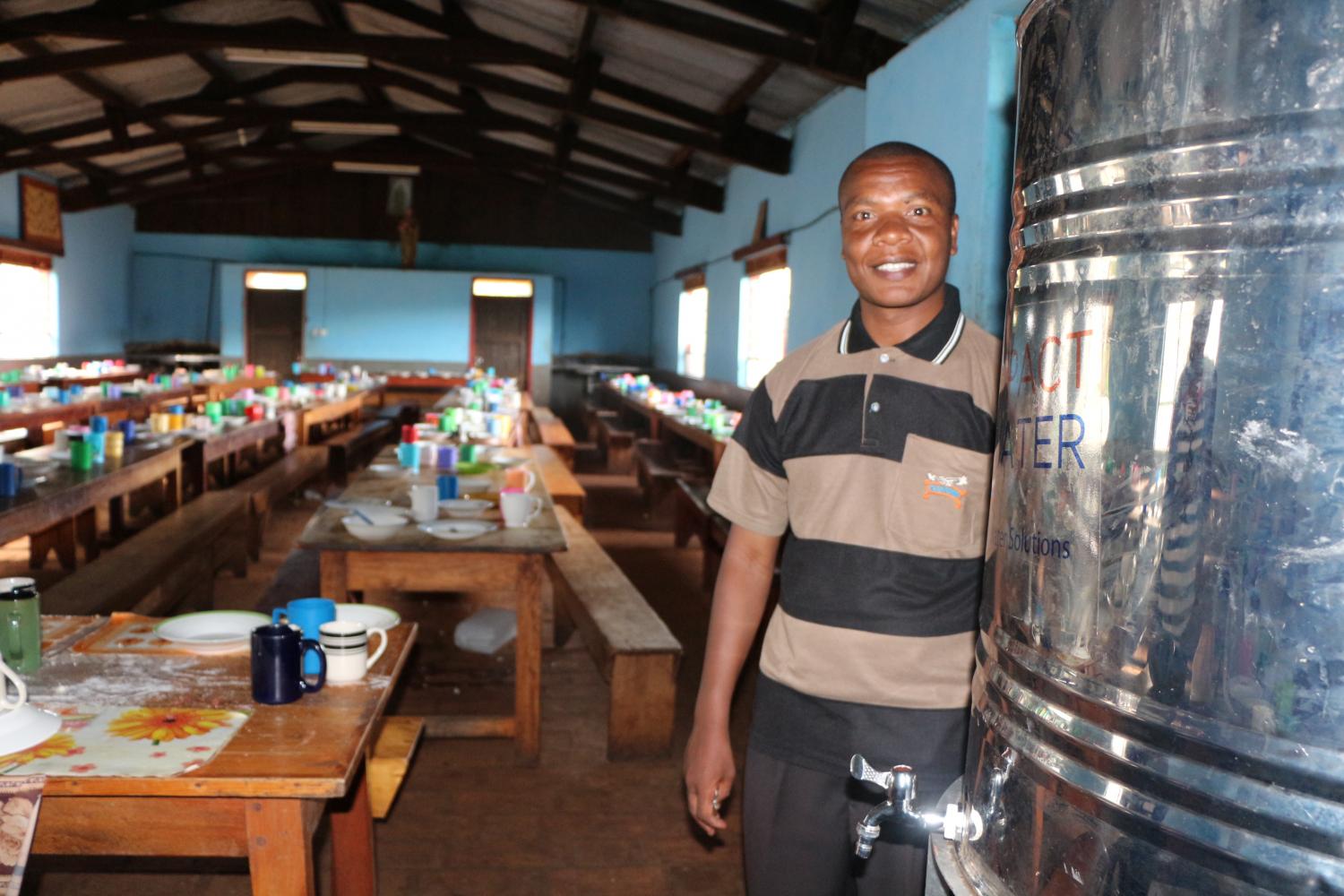 Headmaster and students give excellent reviews to Impact Water. This boarding high school in Western Uganda has placed their tank strategically in the school cafeteria. “Students are enjoying the water. In fact, one tank is not enough. We will need a second one once we have paid this one off!”
Headmaster and students give excellent reviews to Impact Water. This boarding high school in Western Uganda has placed their tank strategically in the school cafeteria. “Students are enjoying the water. In fact, one tank is not enough. We will need a second one once we have paid this one off!” 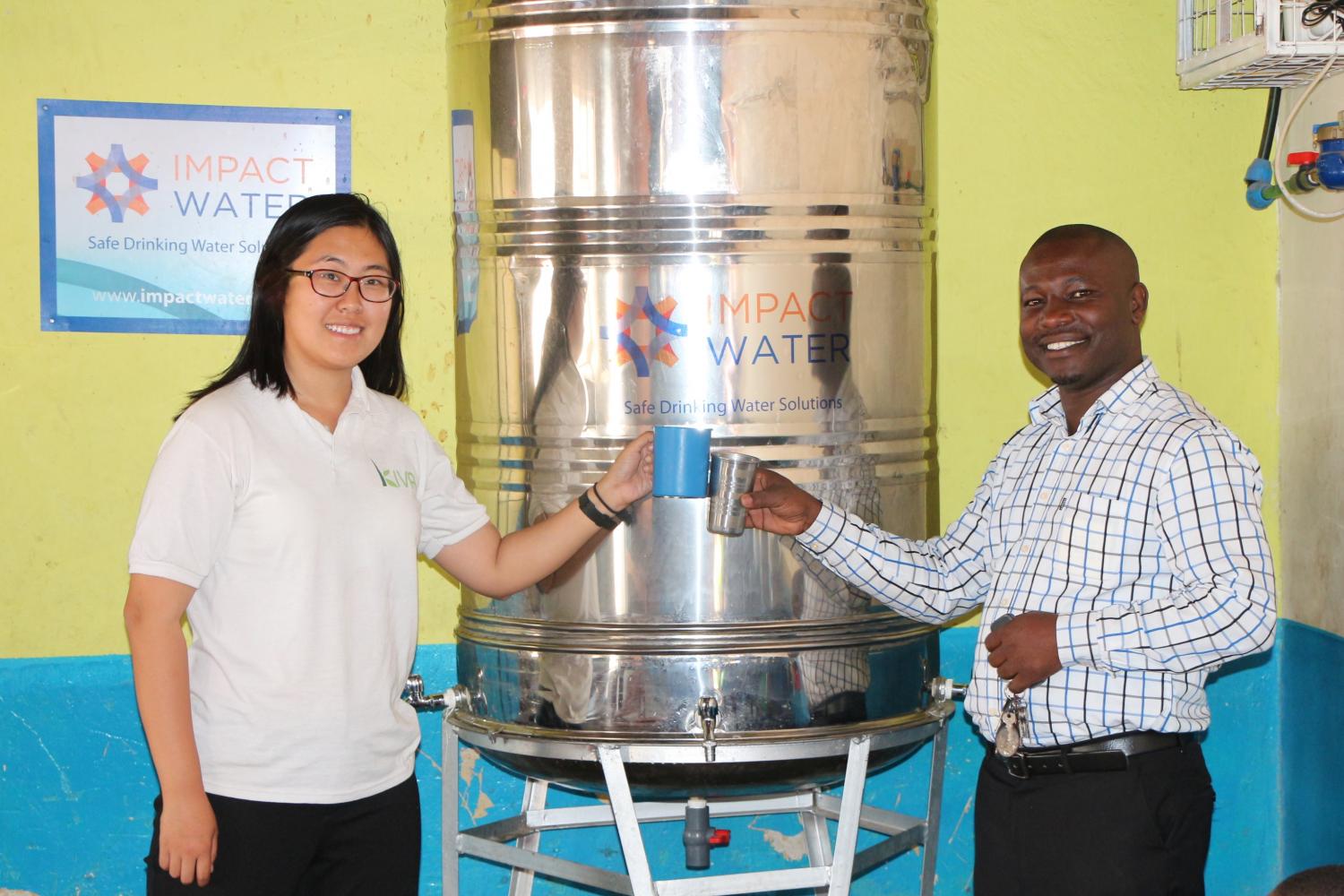 Celebrating clean drinking water.
Celebrating clean drinking water. The United Nations considers universal access to clean water a basic human right, and an essential step towards improving living standards worldwide. Water-poor communities are typically economically poor as well, their residents trapped in an ongoing cycle of poverty. Thank you to Kiva Lenders and Impact Water, we are alleviating problems, and providing drops of hope, one school at a time. Cheers to clean water!
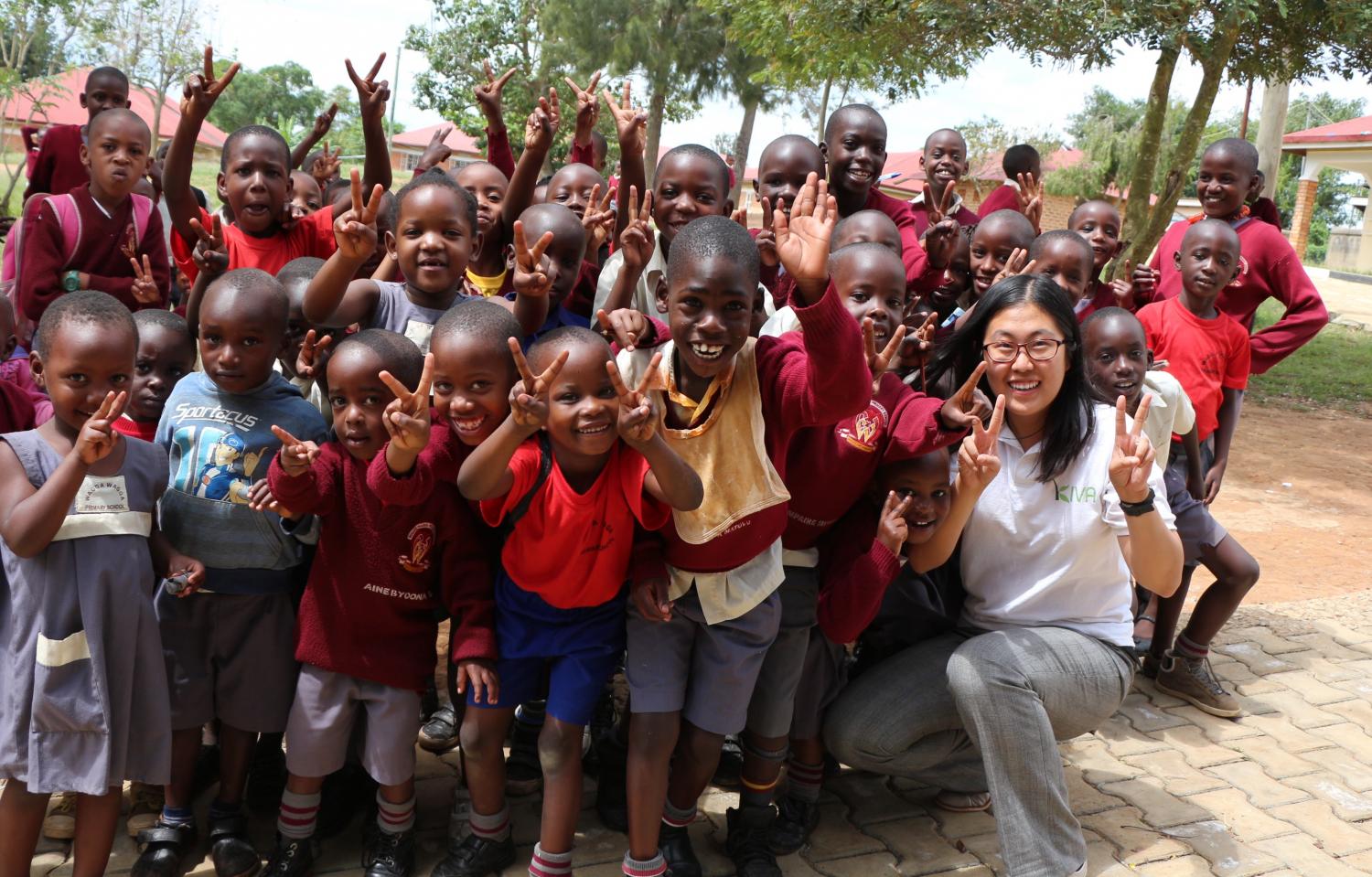 Let's keep these little ones healthy and strong so that they can focus in school!
Let's keep these little ones healthy and strong so that they can focus in school!To learn more about Impact Water, check out their website and look out for future Kiva loans. You can read more about my Kiva Fellowship adventures here.
PREVIOUS ARTICLE
Innovative Loans Series: Lending based on character, not credit scores →NEXT ARTICLE
Life in the Field: Favorite Pics from Latin America and Kenya →













